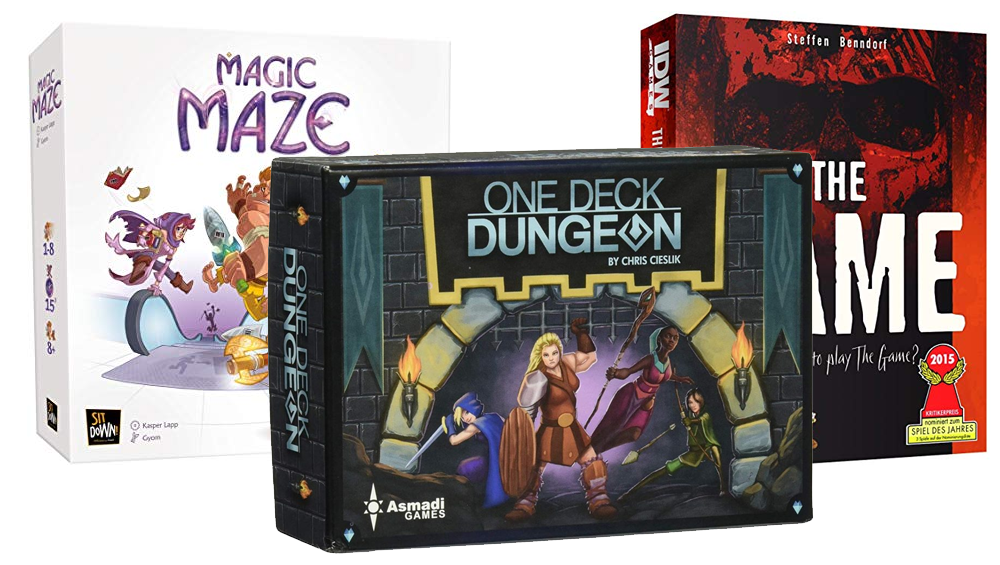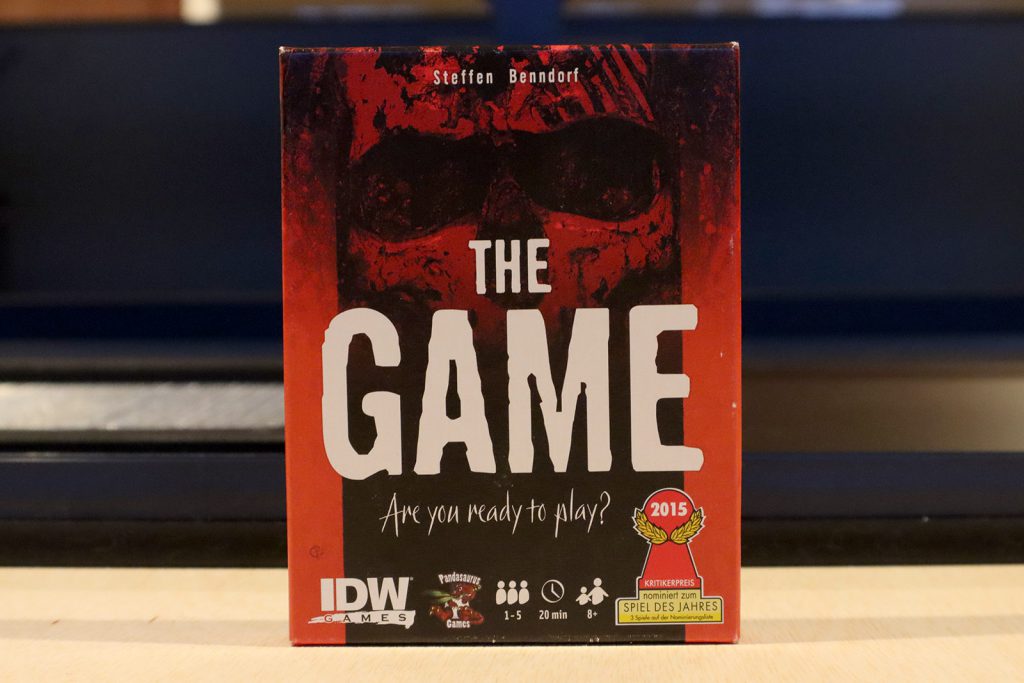As much as we love pushing our armies around the table, sometimes we need a break. Whether its a quick game between rounds or an all day main event, the Goonhammer team can often be found pushing chits, cubes, and cards around a board game. Boardhammer will bring you periodic reviews and articles from the land of hobby board games.
The mission is over and you and your friend shake hands. Several hours after the first die roll, the Warhammer match is finished and one of you reigns victorious, the other wallows in defeat. Tensions are high and thoughts of “the die roll that could have been” swim in your heads.
Putting away your last mini, you both want to unwind, to relax after the chaos that was the game. Take a breather, grab a sandwich, and let your mind work through the mental notes of the last few hours. You want to talk things through with your friend, to find out if you missed any obvious openings, or learn if you misplayed a round and left victory points on the table.
Sure, you could put on an episode of The Office, but both of you will veg out and there won’t be any meaningful discussion. You could set up a game of Kill Team, but that game will start stomping out the mental notes you took from the last one.
You need something neutral. Something non-Warhammer, but something that keeps the two of you engaged. Something that brings the two of you together and lets you focus on a common task.
You need a co-op board game.
Hold on, before you click away, hear me out. If you’ve never played a board game in this genre before, let me paint you a picture. Imagine a game where you and your friend put your minds together, working to solve a problem that can only be done with cooperation and discussion. A game that will get a conversation going between the two of you and will distract your brain just enough to let you sort through your thoughts. Still onboard?
Let’s go over a couple games in this genre that I personally love. They’re all relatively cheap, cooperative, small enough to toss in a backpack, and play fantastically with two players.
The Game
Despite this game having a name that makes it difficult to find on Google, The Game is easy to find a place for in your backpack. Taking up little more room than two decks of cards put together, it’s an interesting cooperative puzzle in a tiny package.
There are around 100 cards in the box, numbered from 1 to 100. You and your friend each have a small hand of random cards, and you take turns playing cards from your hand onto one of four piles: two piles which must always count up, and two which must always count down. The trick for the game – and why it works – is that you may never tell anyone what cards you have in your hand. You must always be vague, saying that you would prefer if one pile in particular was left untouched, or that only have a couple options available to you and that you absolutely need that 85 to remain open. The Game ends when a player can’t complete their turn, and then you count how many cards remain unplayed. The fewer number of cards remaining, the better you did. If you manage to play the entire deck then you win.
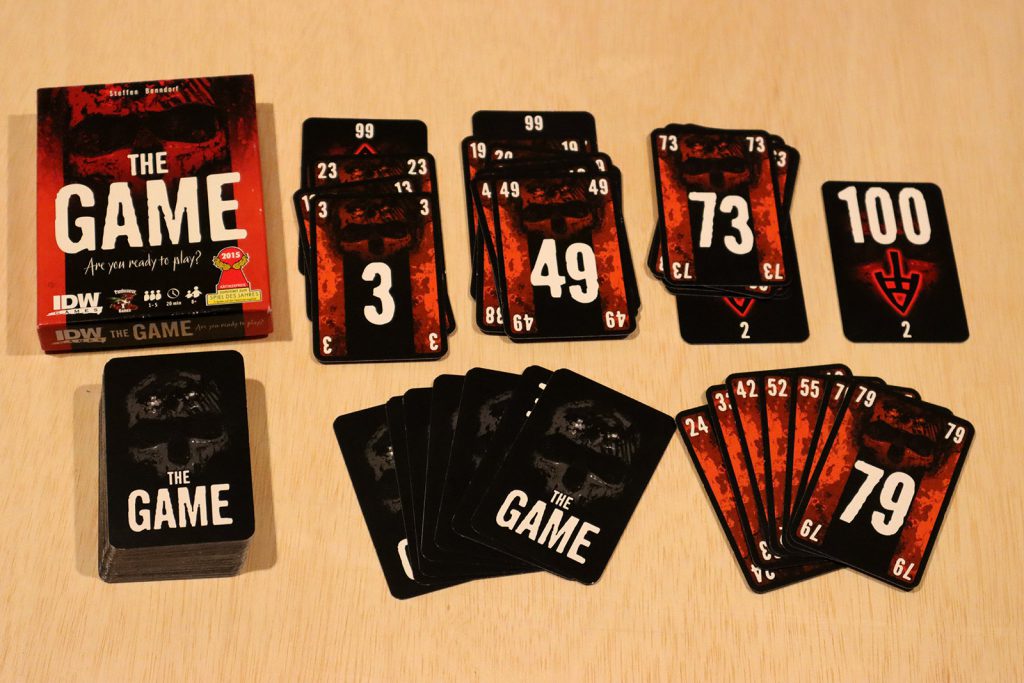
Credit: Pendulin
There are a handful more rules. Jumping piles in the opposite direction by 10, a harder difficulty mode, playing different numbers of cards each turn to make the most of your hand, but none of those are why I mention it.
I mention it because it’s a fast game that lets you and a friend relax, grab a glass of water, and work together to solve a puzzle. There’s no timer, and no rush. It’s a perfect neutral medium for you to occupy your hands and brain while the two of you unwind. Only towards the end does The Game get intense, and boy does it ever.
You’ll be down to the last few cards, and you’ll see a path to victory in your hand, but only if you can play cards in a specific order on a specific pile. However, your friend mentions that they also need their cards to go down in a specific order on that same pile. In that moment, the game goes from lighthearted fun to a co-op cold war. Neither of you want to play a card, as whoever goes first can make the other’s hand unplayable. The only safe move is to not play, but one of you must be first to put a card down. You stare across the table, knowing that if you don’t play your hand now, then you might never be able to. You reach for a card, and your friend inhales sharply. Your hand freezes, eyes locked. They reach for a card and you shake your head ‘No’ without a sound. The spotlight overheard casts harsh shadows, a cold breeze raises goosebumps across your neck, and you hear drums, drums in the deep. You slowly pick a single card from your hand and lower to the table, revealing it.
Win or lose, the whole game takes about 20 minutes, and you can easily toss it in your bag afterward, or shuffle it up and play again. You can even adjust the difficulty by changing the hand size, or number of cards each player must play on their turn.
There have been a couple remakes of The Game, adding different rules or changing the art style from appropriately grimdark to abstract and colorful. You can’t really go wrong with any of them, and it’s a cheap enough game that I definitely recommend it.
One Deck Dungeon
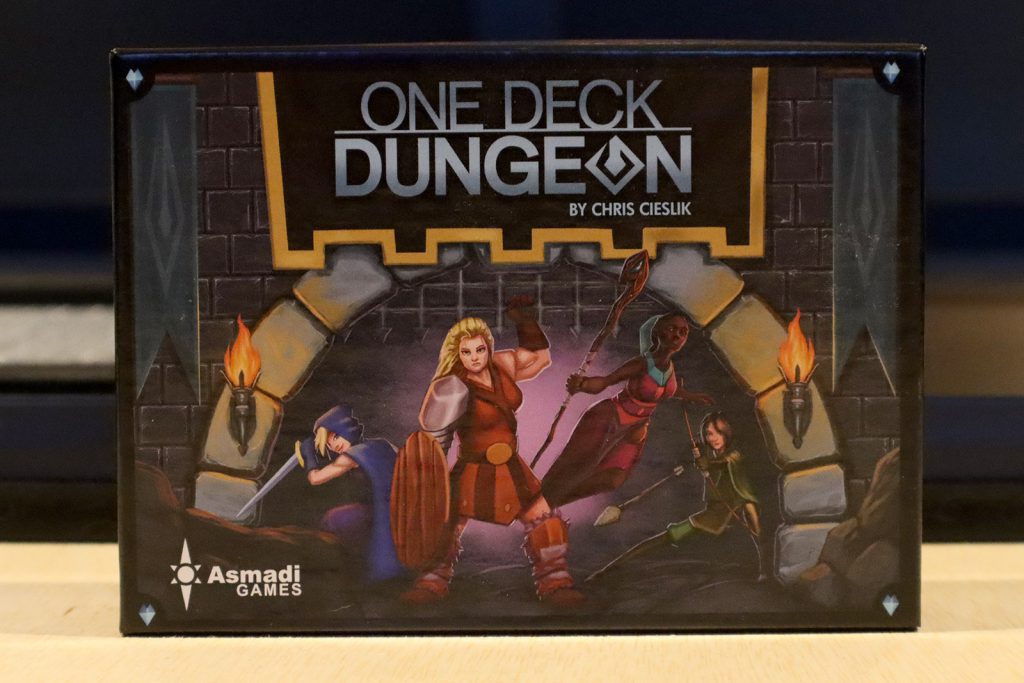
Credit: Pendulin
You like dice, right? Of course you do. Throw a handful of dice, hold your breath, and hope to see that perfect outcome where all your plans fall into place. But let’s build on this. What if every hand of dice turned into a unique puzzle? You need two 6s and two 5s, but you didn’t roll anything higher than a 3. You have some abilities at your disposal, like discarding any three dice to generate a single 6, but that’s not enough to beat the puzzle. You could use an ability to bump one of your dice up by one, but that ability could instead let you reroll a single die and see where that gets you.
Then you look across the table at your friend, staring down and their own pool of dice, working out the same puzzle in their head. You realize that if you bump up one of their dice, then they would have a matching pair that lets them use an ability on dice in your pool. If they do that, then you could trigger another one of your abilities to further alter the rolls. Going back and forth, you eventually puzzle out how to turn the mismatched chaos of your rolls into the exact combination of dice you need to beat the challenge, excellent!
One card down, and the rest of One Deck Dungeon to go.
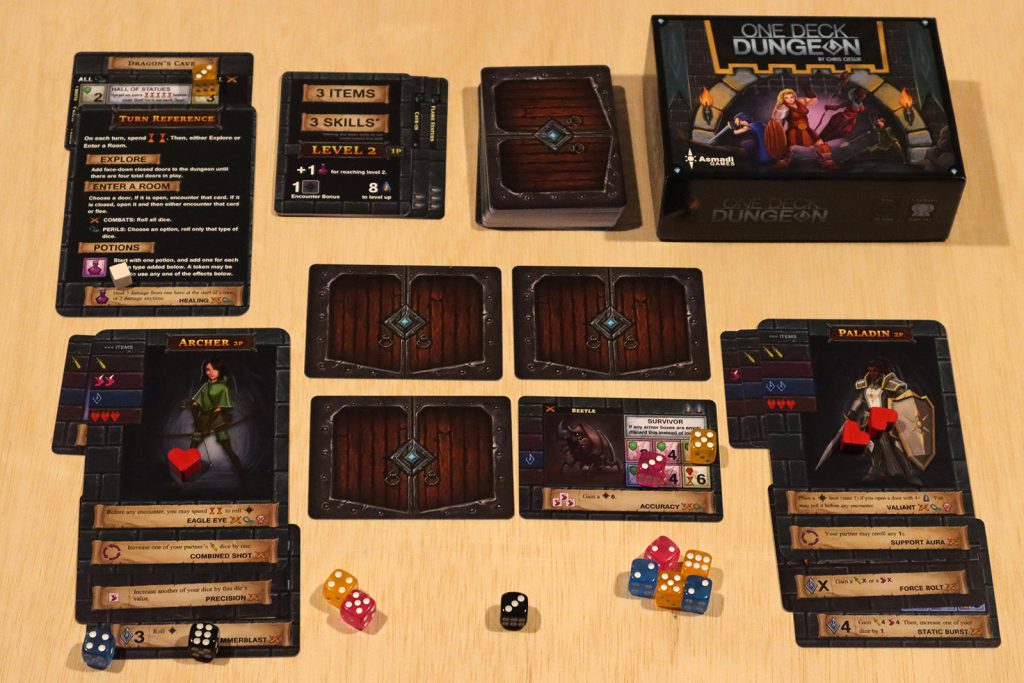
Credit: Pendulin
To play One Deck Dungeon, you and your friend make your way through a dungeon, represented by a deck of cards. Each card is a monster or trap that requires a specific combination of dice to defeat. As you progress further into the dungeon, each new floor adds global effects that makes the hazards harder to deal with. Fortunately, every monster or trap you defeat turns into an item that increase the size of your dice pool, or a skill that lets you control some of the randomness, or good old fashioned experience points that level up your character and grow even stronger.
I haven’t even touched on the brutal boss fight at the end of the dungeon, the different characters you can play, or the campaign mode where you permanently strengthen your characters across multiple games. This is all packed into a little box that’s less expensive than a decent lunch. There are even digital versions available on iOS, Android, and Steam.
One Deck Dungeon will take you about an hour to play through, but don’t let that frighten you off. Most of that time is spent talking with your friend and solving the latest puzzle brought to you by your dice. It’s fun, promotes working together with a friend, and ends in a cheer when the final boss is defeated. A perfect game to unwind with.
Magic Maze
This game is a little different, a little weird. Where other cooperative games encourage you to talk with your friends, this one explicitly prohibits it. Where other games have players taking turns, this one is a frantic scramble where everyone plays simultaneously as fast as they can. Where other games give each player their own character, Magic Maze instead lets every player control every character. Where other games can be dull, Magic Maze is awesome.
Imagine solving a traditional pen-and-paper maze, except you can only draw lines moving right and lines moving down. Fortunately, your friend can draw lines moving left and lines moving up. Now imagine you have four different colored lines you are trying to navigate through the maze. Add in checkpoints that each color needs to hit along the way, toss in a randomized maze layout, warp stations, and a physical hourglass that’s counting down precious seconds until it’s game over.
Now imagine trying to get your friend to move the red line up and to the left, but they’re busy moving green around. You can’t talk or gesture to the maze, so you place the ‘Do Something’ token in front of them, and they look confused. They scan the board, but can’t figure out what you want them to do. They place the ‘Do Something’ token back in front of you, and you scan the board looking for something you missed. Precious seconds tick away, and you both need to act!

Credit: Pendulin
The theme for the game is a little weird. Each colored piece represents a different hero: Barbarian, Mage, Elf, and Dwarf. Why are half the heroes fantasy races and the other half fantasy classes? Who knows! These heroes have had their possessions stolen, and so are shoplifting replacement gear from their local shopping mall. If that theme makes no sense to you, which it shouldn’t cause it’s super weird, you can largely ignore it. Magic Maze boils down to moving colored wooden pawns around the board to their own respectively colored locations to pick up an item, and then moving each of them to their own exits. The maze is made up of these cardboard tiles that are shuffled before the game starts, so you never know where these items or exits will show up.
What makes Magic Maze even better is that it comes with 17 different scenarios that keep adding rules, making it harder and more fun. Each scenario takes less than 15 minutes to play, so you’ll challenge yourself to get through as many scenarios as you can in a single evening. The first scenario is almost trivially easy, and the last one has ramped up the difficulty to the point where hearts will be racing and you’ll have to be laser-focused to even have a chance at winning.
It’s stressful, it’s hectic, and every game I’ve played of it ends in a collective sigh of defeat or arms being thrown into the air in celebration as someone moves the final piece into the winning location just seconds before time runs out. It’s great.
If Magic Maze is so stressful, then why do I consider it a game to unwind, especially when you aren’t allowed to talk while playing? It’s because this is a capstone game. This is one you play before calling it a night. This is a game where you have to clear your mind and focus, but beating a tough scenario is like letting out a long-held breath. You make eye contact with the other players and know that, in your moment of triumph, you’re on the same wavelength and nothing will stop you. Then you’ll turn a page in the rulebook, set up the next scenario, see the new rule and laugh at how much harder it makes the game, flip the hourglass, and get going!
That’s it for this week’s Boardhammer! Thanks for reading, and we’d love to know what you thought about it – drop us some feedback in the comments below, on our Facebook page, or email us at contact@goonhammer.com.
